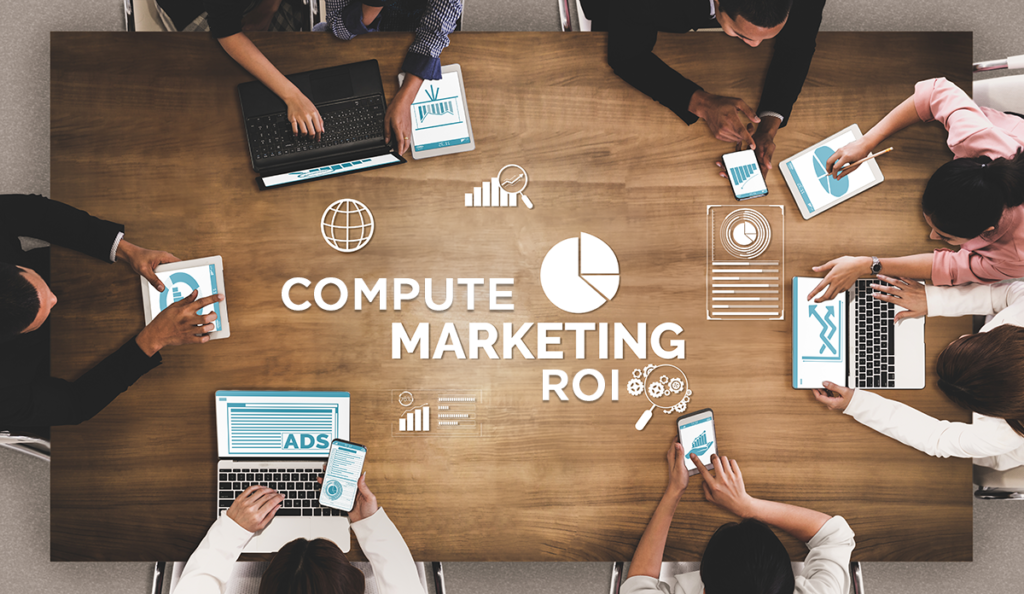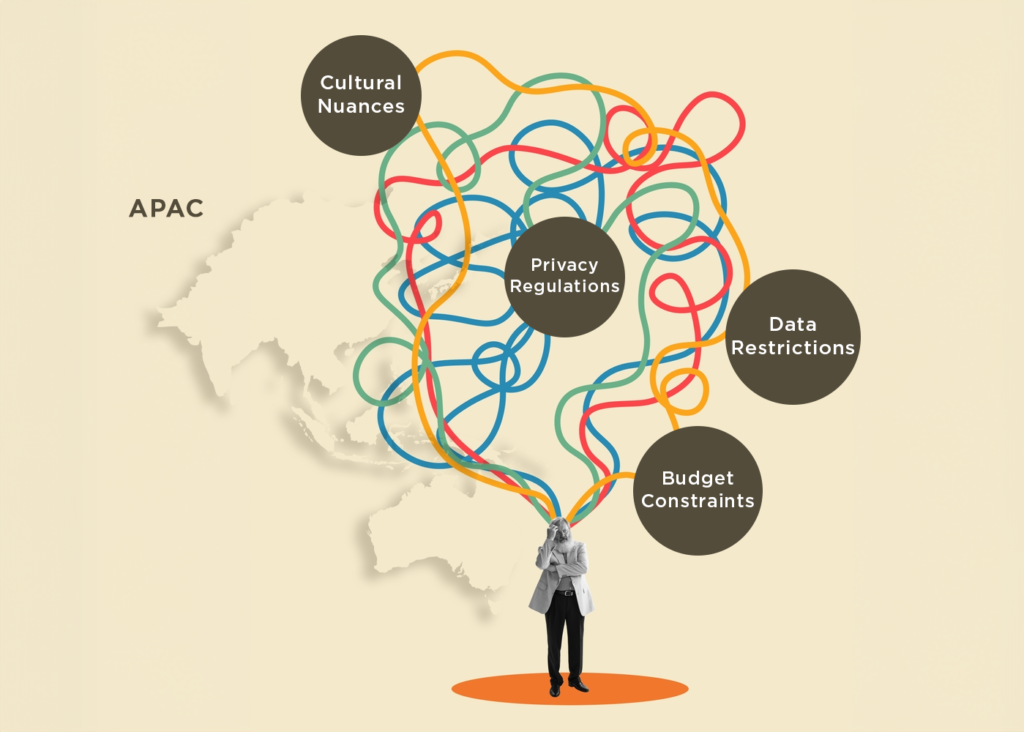Where privacy rules might make measuring success trickier, are you ready to untangle the ROI web in APAC's B2B marketing?
In the robust world of B2B marketing, proving the value proposition goes beyond showcasing captivating campaigns. Decision makers today require a data-driven approach, and a key metric reign supreme: Return on Investment (ROI), they are constantly seeking innovative methods to quantify the impact of their efforts. The digital age offers a treasure trove of data, but deciphering its true meaning and translating it into actionable insights remains a challenge.
Unveiling the Customer Journey: Modern Marketing Attribution in 2024

Marketing attribution models remain a central theme in the ever-evolving marketing landscape, particularly in the dynamic APAC region (2024). These frameworks go beyond simply assigning credit to a single touchpoint. They offer a sophisticated approach to understanding the intricate web of interactions that influence a customer's decision-making journey.
By implementing the right attribution model, APAC brand wizards can unlock valuable insights that empower them to:
- Optimize Channel Performance: Basic tracking only looks at the final click before someone buys, but most people see your brand in many ways before converting. Advanced models consider all these "touches" - social media posts, website visits, emails, etc. This lets you see which channels are most effective at bringing in valuable leads (interested potential customers) and turning them into conversions (sales). Basically, you can spend your marketing budget smarter across different channels like social media or content creation.
- Measure Campaign Impact with Precision: Single-touch attribution only gives credit to the final touchpoint, like a website click before a purchase. Modern models are more like giving credit to everyone who played a role. Fractional attribution might give some credit to each ad a customer saw, while time-decay might give more credit to earlier interactions that started the customer thinking about your product. This lets you see which parts of your marketing campaign (like different ads) are really working and which ones need improvement. You get a better picture of what's driving sales and can use that information to make your marketing even better in the future.
- Unravel the Customer Journey: Modern attribution models go beyond simply tracking conversions. They provide in-depth insights into how prospects interact with your brand at various touchpoints throughout their journey. This valuable data reveals hidden patterns in customer behavior, enabling marketers to understand:
- Content consumption preferences: What type of content resonates most with your target audience?
- Touchpoint engagement: Which channels are most effective at nurturing leads and guiding them towards conversion?
- Path to conversion: How do different touchpoints interact and influence the customer’s journey?
Leveraging these insights allows you to:
- Personalize the customer experience: Tailor messaging and content based on specific customer segments and their interactions with your brand.
- Optimize marketing funnels: Identify bottlenecks and areas for improvement within the customer journey, leading to a smoother conversion process.
- Fuel strategic decision-making: Data-driven insights empower informed resource allocation and campaign optimization, ultimately driving sustainable growth.
However, the cookie less future necessitates a shift in attribution strategy:
- Focus on first-party data: Since third-party cookies are being phased out, collecting, and leveraging zero-party data directly from customers becomes crucial.
- Embrace advanced modeling techniques: Utilize AI-powered attribution models that can analyze complex customer journeys and attribute value even in the absence of cookies.
How do you Step into the Attribution Revolution to Compute Marketing ROI:

Computing Marketing ROI via marketing attribution models are the new talk of the town, and for good reason. By attributing revenue or conversions to specific touchpoints within the customer journey, marketers can identify the most effective channels and optimize campaigns for maximum Return on Investment. Industry leaders like marketing technology companies are constantly publishing reports outlining the latest trends and best practices in attribution modeling. These reports offer valuable insights into:
- Multi-touch attribution: Recognizing the influence of various channels throughout the customer journey, not just the first or last touchpoint.
- Data-driven decision-making: Leveraging customer behavior data to refine targeting and personalize campaigns.
- Marketing technology solutions: Exploring the latest tools and platforms that simplify attribution modeling and: providing real-time campaign performance insights.
The Tangled Web: Challenges in the APAC Landscape:

The APAC region presents unique challenges for measuring B2B marketing ROI. Here's a closer look:
1. Data Restrictions and the Rise of Privacy Regulations:
- Data Fragmentation Persists: Multiple platforms, siloed data sources, and the increasing adoption of cookie-less tracking solutions continue to hinder the creation of a unified customer view. Marketers need to explore alternative identifiers and invest in Customer Data Platforms (CDPs) to consolidate data and gain a holistic understanding of campaign performance.
- Navigating the Regulatory Landscape: Data privacy regulations like GDPR, PDPA (Singapore), and similar measures in other APAC countries necessitate a focus on ethical data collection and utilization. Agency runners must ensure their marketing efforts comply with evolving regulations while still gathering valuable insights.
2. Cultural Nuances and the Evolving Consumer:
- Understanding the Digital Shift: APAC consumers are rapidly embracing omnichannel experiences and mobile-first interactions. Marketers need to tailor their measurement strategies to capture data across diverse online touchpoints, including social media platforms like WeChat and emerging channels like the metaverse.
- Accounting for Cultural Specificity: Consumer behavior and decision-making processes still vary significantly across APAC markets. Local market research and ongoing analysis are crucial to accurately attribute value and understand the nuances influencing purchase decisions.
3. Budgetary Constraints and the Need for Efficiency:
- Cost-Effectiveness Remains Paramount: Limited marketing budgets in certain APAC markets necessitate a focus on maximizing ROI. Authority holders should prioritize data-driven marketing tools that offer clear attribution models and actionable insights to optimize campaign spending.
- Embracing Marketing Automation: Leveraging marketing automation tools can streamline processes, reduce manual workload, and free up resources for strategic initiatives. This allows for a data-driven approach to measurement without incurring excessive costs.
Conquering the Evolving Landscape for Effective B2B Marketing ROI Measurement

Having identified the roadblocks to ROI measurement in the APAC region, we must now explore effective solutions tailored for the current landscape (2024):
1. Building a Future-proof Marketing Cloud:
- Invest in a CDP: Move beyond siloed data sources by implementing a Customer Data Platform (CDP). CDPs unify customer information from various channels, providing a single source of truth for a holistic view of campaign performance and customer interactions.
- Embrace Cookie less Tracking Solutions: With the deprecation of third-party cookies, marketers need to adopt alternative tracking methods. Look for solutions like contextual targeting, identity resolution tools, and leveraging zero-party data collected directly from customers.
- AI and Machine Learning: Integrate marketing attribution models powered by AI and machine learning. These can analyze complex customer journeys, identify hidden patterns, and attribute value across touchpoints, even in the cookie less era.
2. Prioritizing Data Governance in a Privacy-First World:
- Data Security and Compliance: Implement robust data security measures to safeguard customer information. Regularly review and update data governance policies to ensure adherence to evolving regulations like PDPA (Singapore) and similar measures across APAC.
- Transparency and Consent Management: Clearly communicate data collection practices and obtain explicit consent from customers. Leverage preference centers allow users to control how their data is used.
3. Fostering a Data-Driven Culture:
- Integrate Measurement into Marketing Strategy: Move beyond siloed marketing measurement teams. Embed data analysis and ROI measurement into the core of your B2B marketing strategy, making it a collaborative effort.
- Invest in Data Literacy: Equip marketing teams with the skills and knowledge to interpret data effectively. Upskilling initiatives can help bridge the gap between data collection and actionable insights.
- Embrace Experimentation and Continuous Improvement: A/B test different marketing tactics, landing pages, and messaging to understand what resonates best with your target audience. Utilize data insights to continuously refine and optimize campaigns for maximum ROI.
4. Partnering for Success:
- Seek Agencies with Regional Expertise: Look for marketing partners with a deep understanding of the APAC landscape. Their knowledge of cultural nuances, consumer behavior, and evolving regulations can be invaluable in crafting effective measurement strategies.
- Focus on Measurable Outcomes: Select partners who prioritize demonstrable ROI and can translate campaign efforts into clear metrics that align with your business goals.
Remember, measuring ROI is not just about numbers; it's about gaining a deeper understanding of your target audience and optimizing your marketing strategy for long-term success. For further insights, consult the latest reports by leading marketing technology companies on attribution modeling trends and best practices. This approach empowers market navigators to confidently demonstrate the value of B2B marketing, secure future investments, and propel their brands towards achieving sustainable growth.





